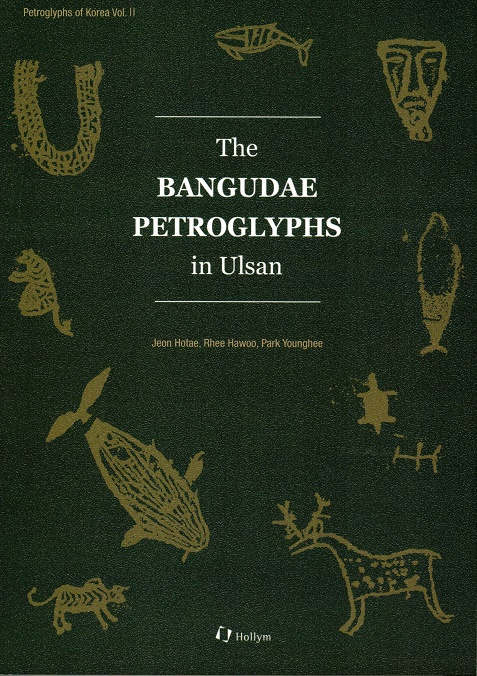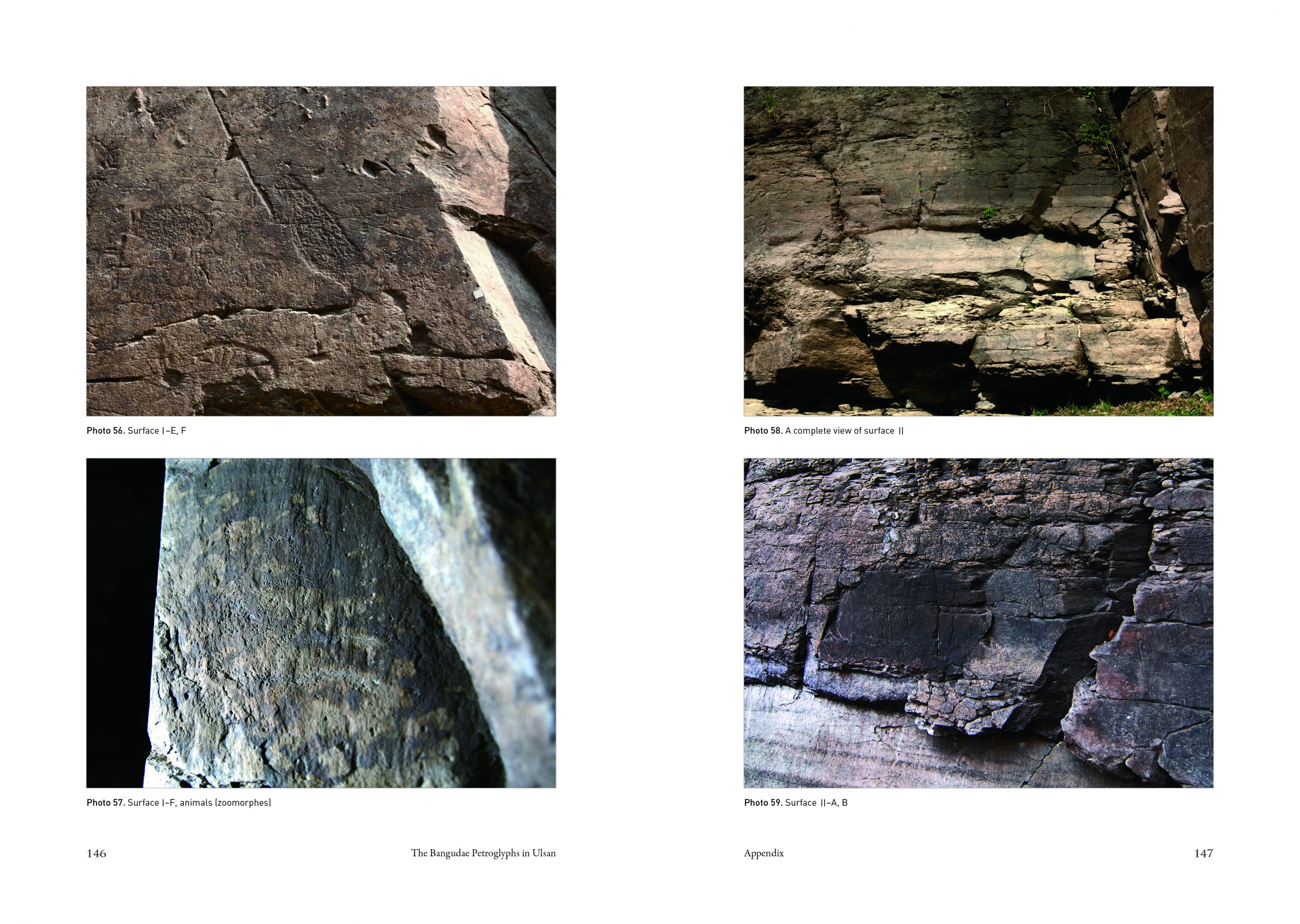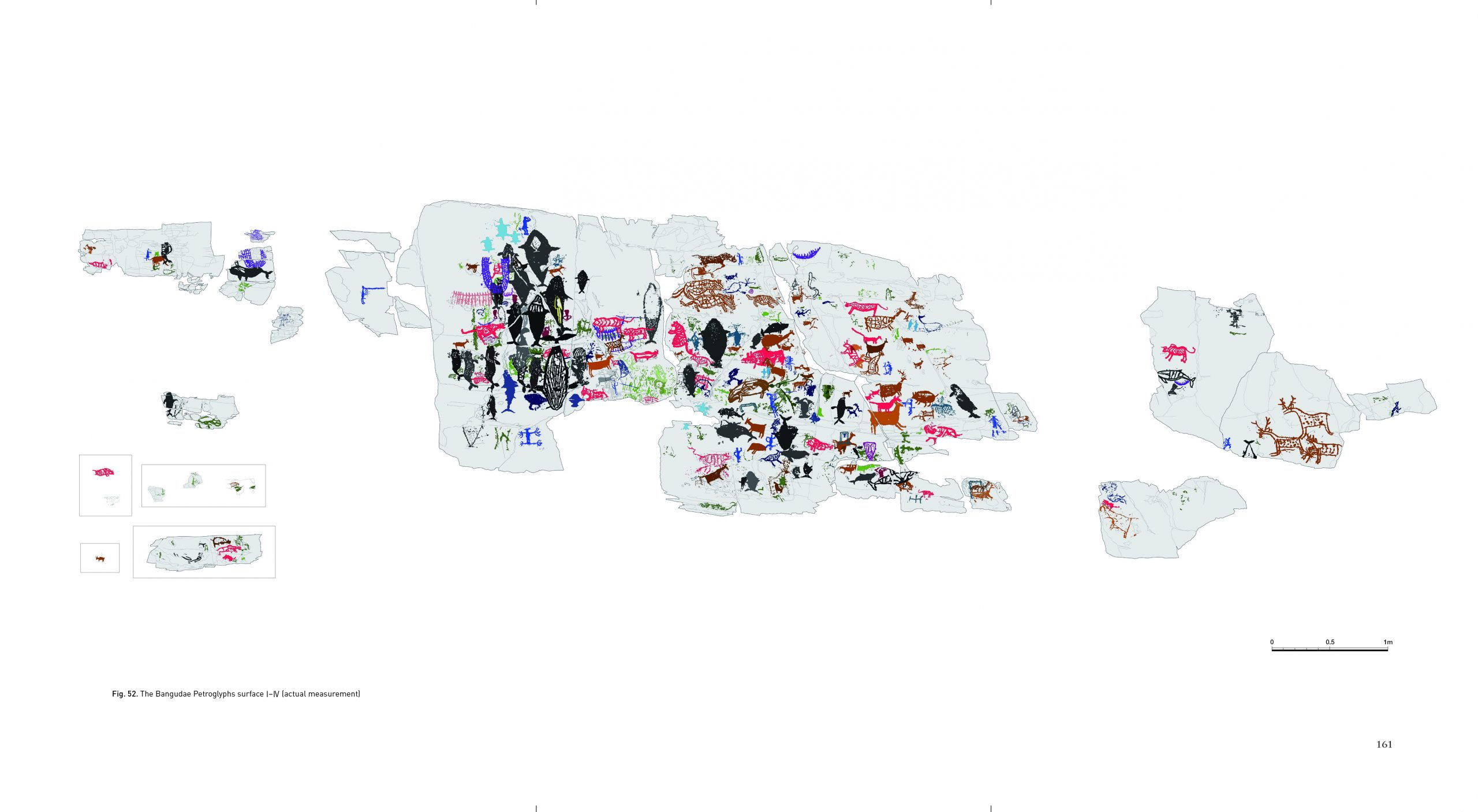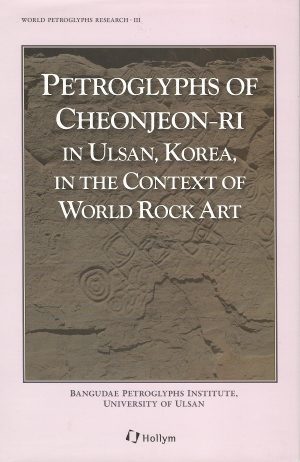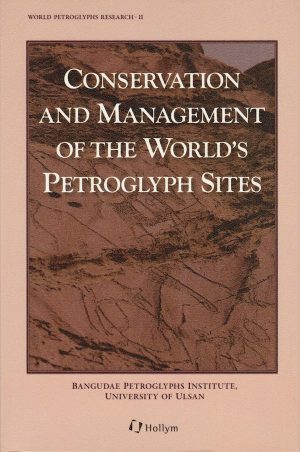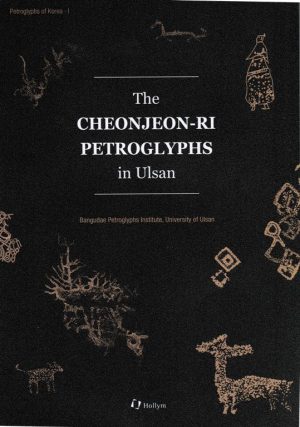Bangudae Petroglyphs in Ulsan
$34.50
The Bangudae Petroglyphs in Ulsan is the second volume of Petroglyphs of Korea published in 2014 and the fourth published by the Institute which is part of the Korean petroglyph analysis report series. Ulsan Bangudae Petroglyphs, National Treasure No. 285, Bangudae Petroglyphs is an archaeological site located on the perpendicular rock surfaces at Ulsan Metropolitan City in Korea.
Ulsan Daegok-ri Bangudae Petroglyphs takes an important place in the prehistoric world art history as one of the often-cited sites when discussing the prehistoric art trends. Bangudae Petroglyphs preserve the people’s views on the world, nature and life in the prehistoric hunting and gathering society. Bangudae Petroglyphs show a variety of animals other than whales, deer and tigers. The additional research findings and the increased understanding of the prehistoric ecosystem and environment of the Ulsan area may help identify the previously unidentified species of the petroglyphs.
Preface
Location and Environment of the Archaeological Site
1. Environment and Geography
2. Archaeology and History
Categories of Motifs in Bangudae Petroglyphs
1. Surface I —. Main Rock Surface
1) Humans (anthromorphes)
2) Animals (zoomorsphes)
3) Tools
4) Unidentified
2. Surface Ⅱ
3. Surface Ⅲ
4. Surface Ⅳ
5. Classification of Images
Conclusion
Bibliography
Abstract
Appendix
Author(s)
Ho-tae Jeon
Ho-tae Jeon is a professor of Department of History & Culture at University of Ulsan, Korea. He received his BA, MA, and PhD in Korean history at Seoul National University and has been a curator at the National Museum of Korea. He specializes in the ancient cultural history of Korea and has published numerous articles on Goguryeo tomb murals and ancient Chinese art. Professional research projects include GOGURYEO GOBUNBYEOKHWA ILKKI (Reading the Goguryeo Tomb Murals) (Seoul: Seoul National University Press, 2008), GOGURYEO TOMB MURALS; THE DREAMS OF THE LIVING AND HOPES OF THE DEAD (Seoul: Seoul National University Press, 2007), GOGURYEO GOBUNBYEOKHWAUI SEGYE (The World of Goguryeo Tomb Murals) (Seoul: Seoul National University Press, 2004), SARA INNEUN URI YEOKSA, MUNHWA YUSANUI SEGYE (Korean History Alive, The World of Cultural Heritage) (Ulsan: University of Ulsan Press, 2004), GOGURYEO GOBUN BYEOKHWA YEON-GU (Study of Goguryeo Tomb Murals) (Seoul: Sakyejul Publishing, 2000). Handbooks for students and general readers include BYEOKHWAYEO, GOGURYEOREUL MALHARA (Murals, Unveil Goguryeo) (Seoul: Sakyejul Publishing, 2004), BYEOKHWARO BON GOGURYEO IYAGI (Seeing Goguryeo through the Tomb Murals) (Seoul: Pulbit Publishing, 1999). He has also written the following educational history books for children: GOGURYEO SARAMDEREUN WAE BYEOKHWAREUL GEURYEONNAYO? (Why Did Goguryeo People Paint Murals?) (Seoul: Five Wagons Publishing, 1998), SILLAREUL WAE HWANGEUMUI NARARAGO HAENNAYO? (Why Was Silla Called the Golden State?) (Seoul: Five Wagons Publishing, 1999
Hawoo Rhee
Dr. Rhee Hawoo is a research professor at the Bangudae Institute, University of Ulsan. He received his Ph.D. from Gyeongju University. His research focuses on the ritual meaning of Korean petroglyphs. He also has contributed to the field by discovering a number of petroglyphs sites. Dr. Rhee actively publishes books and articles on Korean and East Asian petroglyphs.
Younghee Park
Dr. Park Younghee is a prehistorian and formerly professor at Dongseo University. She graduated Ewha University (B.A. and M.A. in history) and received a Ph.D. from Museum National d’Histoire Naturelle, in France. She served as a curator at Dankook University Museum and also had taught at Ewha University and Yeonsei University.
164 pp.
Softcover 17 x 24 cm.ISBN-13: 9781565914926ISBN-10: 1565914929

